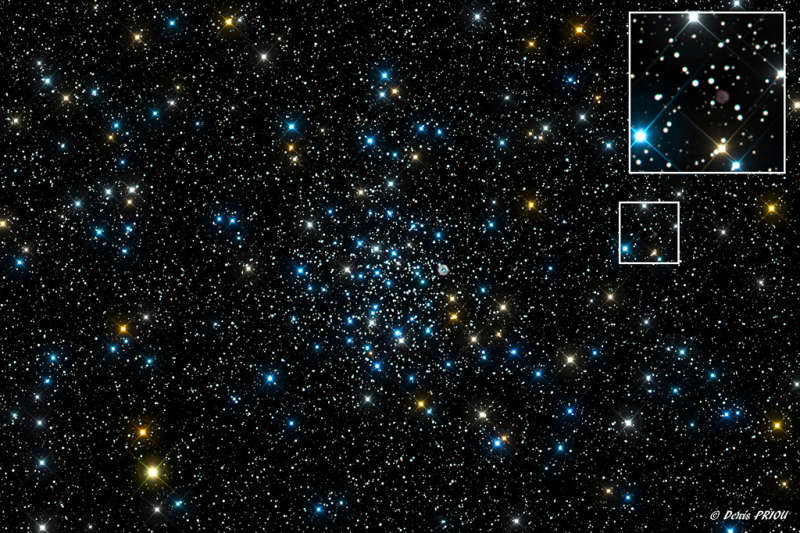Credit & Copyright: Denis Priou
Explanation:
Galactic or
open star clusters
are young.
These swarms of stars are born together near the plane of the Milky Way,
but their numbers steadily dwindle as cluster members are
ejected by galactic tides and gravitational interactions.
In fact,
this
bright open cluster, known as M46, is around 300 million years
young.
It still contains a few hundred stars within a span of
30 light-years or so.
Located about 5,000 light-years away toward the
constellation
Puppis, M46
also seems to contain contradictions to its youthful status.
In this pretty starscape,
the colorful, circular patch above and right of the center of M46
is the planetary nebula NGC 2438.
Fainter still, a second planetary nebula, PK231+4.1,
is identified
by the box at the right and enlarged in the inset.
Planetary nebulae are a brief, final phase in the life of a sun-like
star a billion
years old or more,
whose central reservoir of hydrogen fuel has been exhausted.
NGC 2438
is estimated to be only 3,000 light-years distant, though, and
moves at a different speed than M46 cluster members.
Along with its fainter cohort, planetary nebula NGC 2438 is likely
only by chance
appearing near our line-of-sight to the young stars of M46.
1999 2000 2001 2002 2003 2004 2005 2006 2007 2008 2009 2010 2011 2012 2013 2014 2015 2016 2017 2018 2019 2020 2021 2022 2023 2024 2025 |
Yanvar' Fevral' Mart Aprel' Mai Iyun' Iyul' Avgust Sentyabr' Oktyabr' Noyabr' Dekabr' |
NASA Web Site Statements, Warnings, and Disclaimers
NASA Official: Jay Norris. Specific rights apply.
A service of: LHEA at NASA / GSFC
& Michigan Tech. U.
|
Publikacii s klyuchevymi slovami:
open cluster - planetary nebula - M 46 - Rasseyannoe skoplenie - Planetarnaya tumannost'
Publikacii so slovami: open cluster - planetary nebula - M 46 - Rasseyannoe skoplenie - Planetarnaya tumannost' | |
Sm. takzhe:
Vse publikacii na tu zhe temu >> | |
